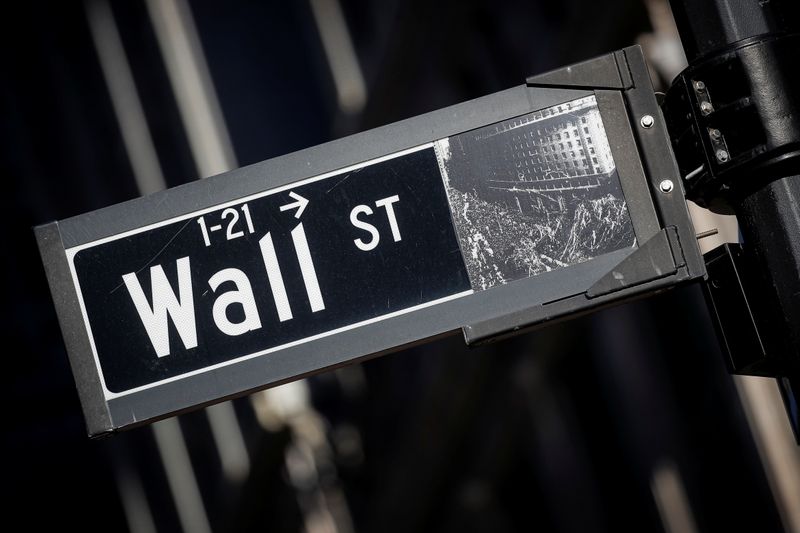Investing.com -- U.S. equity futures are set to end the week in a subdued manner as investors look forward to next week's Federal Reserve policy-setting meeting. Adobe slumps on weak guidance, while Bitcoin hands back some of its sharp previous gains.
1. Futures subdued, with next week’s Fed meeting in focus
U.S. stock futures traded in a subdued manner Friday, as investors await more economic data in the wake of another hotter-than-expected inflation report cast doubt over whether the Federal Reserve will start a rate-cutting cycle anytime soon.
By 05:00 ET (09:00 GMT), the Dow futures contract was up 30 points, or 0.1%, S&P 500 futures had gained 3 points or 0.1%, and Nasdaq 100 futures traded largely unchanged.
The major indexes suffered a losing day on Thursday after February’s producer price index came in stronger than expected, adding to the hot CPI release earlier in the week, suggesting inflation remains very sticky ahead of next week’s Federal Reserve’s policy meeting.
There is more data to digest Friday, including numbers on consumer sentiment, import prices and industrial production.
The Fed is widely expected to keep interest rates unchanged next week, and the central bank’s dot plot at the conclusion of its policy meeting next Wednesday is now crucial for guessing just how cautious the officials will be.
2. Adobe hit by soft guidance for current quarter
Adobe Systems (NASDAQ:ADBE) stock slumped over 10% premarket after the software provider reported late Thursday softer-than-expected guidance for the current quarter, adding to concerns that rising competition is stifling growth.
Adobe forecast second-quarter revenue between $5.25 billion and $5.30 billion, below estimates of $5.31 billion, according to LSEG data.
Companies and individuals have shifted focus to cutting costs amid high interest rates and a tough economy, pressuring growth at the Photoshop software maker that has been investing in AI tools to attract more users.
The results come ahead of the company's investor day on March 26, when the company is expected to unveil new products that could alleviate investor fears of rising competition from OpenAI's text-to-video generator, Sora.
3. Bitcoin retreats in volatile trade
Bitcoin slumped to a one-week low in volatile trading Friday, as investors banked profits after the surge to a record high in the wake of another upside surprise on U.S. inflation.
By 05:00 ET, Bitcoin traded 8.5% lower at $67,133.00, a day after the world's largest cryptocurrency hit a high of $73,803.25, setting a new record for a fourth straight day.
However, this could be just a minor setback, if analysts at JMP Securities are to be believed.
The investment firm suggested that the Bitcoin price could potentially surge to $280,000 within the next three years, driven by the anticipated Bitcoin ETF inflows.
The recent gains have been boosted by MicroStrategy Incorporated (NASDAQ:MSTR), the largest corporate investor in Bitcoin, increasing its holdings.
Earlier this month, filings with the US Securities and Exchange Commission revealed that the provider of enterprise software solutions and services acquired 12,000 Bitcoin for $821.7 million, its second-biggest purchase since beginning its cryptocurrency investments nearly four years prior.
This acquisition was mainly financed using the $800 million generated from the sale of convertible notes, and this stance adds risk to the currency crypto market rally, according to JPMorgan (NYSE:JPM).
“We believe debt-funded bitcoin purchases by MicroStrategy add leverage and froth to the current crypto rally and raise the risk of more severe deleveraging in a potential downturn in the future,” said analysts at JPMorgan, in a note.
4. Putin set for landslide victory
Russia heads to the polls Friday, starting to cast their ballots in the March 15-17 election across the country's 11 time zones, with only one outcome likely, the return of Vladimir Putin as president by a landslide.
Putin's approval rating is 86%, according to the Levada Center, the country's best known pollster, with his campaign backed by the state media and shaped by a patriotic stance given the war in Ukraine.
The war has cost many thousands of Russian lives, but the country’s war-focused economy grew 3.6% last year and real wages rose 7.8%, as Western sanctions have so far failed to sink it.
Meanwhile, German Chancellor Olaf Scholz will host his French and Polish counterparts in Berlin later Friday in a bid to project support for Ukraine after weeks of friction between the allies.
French President Emmanuel Macron and Scholz had a difference of opinion in how to support Ukraine last month, and this disagreement comes as U.S. support for Ukraine is also weakening, highlighting a Western leadership vacuum.
5. Oil on track for strong weekly gains
Oil prices edged lower Friday, but were on course to record gains of around 4% this week after a bullish IEA report and a bigger-than-expected draw in U.S. inventories, suggesting improving demand in the world’s largest fuel consumer.
By 05:00 ET, the U.S. crude futures traded 0.8% lower at $80.61 a barrel, while the Brent contract dropped 0.8% to $84.78 per barrel, with both contracts falling back from four-month highs.
The International Energy Agency on Thursday raised its view on 2024 oil demand for a fourth time since November, saying world oil demand will rise by 1.3 million barrels a day this year, up 110,000 barrels a day from last month.
Both contracts had soared earlier this week, to their highest levels since late-November, after an unexpected draw in U.S. oil and gasoline inventories indicated that demand in the world’s largest fuel consumer was picking up.
Prices were pressured Friday by a stronger dollar, which rose sharply on Thursday after producer price index inflation data came in stronger than expected for February.
The reading, which came just days before a Fed meeting, ramped up fears that the central bank will keep interest rates higher for longer in 2024.
